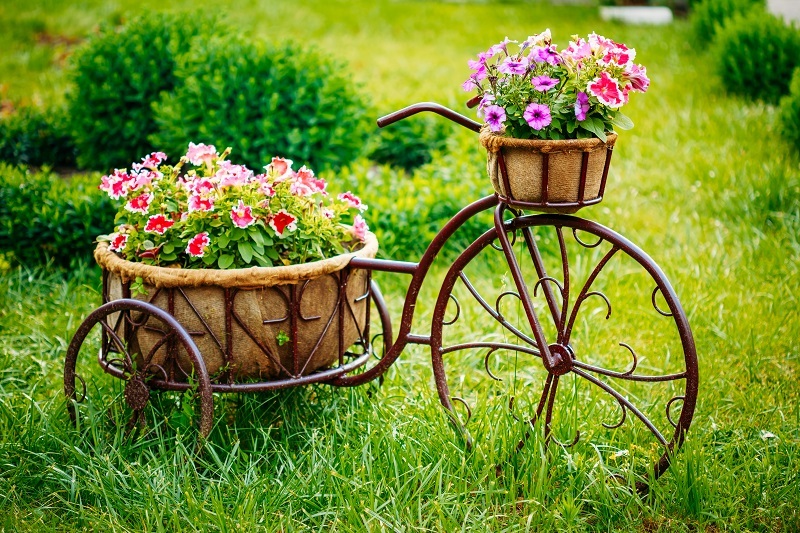Succeed in hydrangea care with expert insights
Posted on 25/08/2025
Succeed in Hydrangea Care with Expert Insights
Hydrangeas are one of the most beloved blooms in gardens worldwide. These magnificent flowers, with their rich heritage, vibrant hues, and lush forms, are a favorite among gardening enthusiasts. However, many people find themselves struggling with proper hydrangea plant care. If you want to succeed in hydrangea care, you need expert guidance and reliable strategies. In this in-depth article, we share comprehensive, actionable insights to help you achieve thriving hydrangea plants season after season.
Understanding Hydrangeas: Varieties and Their Characteristics
Before diving into hydrangea gardening tips, it's important to appreciate the diverse world of hydrangeas. There are several primary types:
- Hydrangea macrophylla (Bigleaf Hydrangea): Known for their mophead and lacecap blooms, these hydrangeas come in blue and pink, with color influenced by soil pH.
- Hydrangea paniculata (Panicle Hydrangea): Distinguished by their cone-shaped flower clusters, these are hardy and often turn blush-pink as they age.
- Hydrangea arborescens (Smooth Hydrangea): Native to North America, they boast ball-shaped flowers. The popular 'Annabelle' is a common cultivar.
- Hydrangea quercifolia (Oakleaf Hydrangea): These offer unique foliage resembling oak leaves and white blooms that age to pink.
- Hydrangea serrata: Similar to Bigleaf, with smaller, more delicate flowers and a good choice for cold climates.
Knowing your hydrangea type is crucial, as each variety has distinct care requirements and potential growth patterns.

Expert Insights: Essential Hydrangea Care Guidelines
1. Selecting the Right Location
Hydrangea care success starts with location. Most hydrangeas prefer:
- Partial sun: Morning sun with afternoon shade is ideal, especially in hot regions.
- Protection: Shelter from harsh afternoon sun and strong winds to prevent leaf scorch.
- Well-draining, fertile soil rich in organic matter for robust growth.
Expert tip: Avoid deeply shaded spots, as this may reduce flowering.
2. Soil Preparation and pH Adjustment
Healthy hydrangeas begin with soil. Experts recommend:
- Testing soil pH: For Macrophylla types, pH determines flower color--acidic soil (pH below 6) produces blue blooms, alkaline soil (pH above 6) leads to pink flowers.
- Amending soil with compost or well-rotted manure to improve nutrients and drainage.
- For blue flowers, add aluminum sulfate; for pink, use garden lime.
3. Proper Watering Techniques
Hydrangeas have shallow roots and appreciate regular moisture. Follow these pointers:
- Water deeply at the base--avoid soaking leaves to prevent disease.
- Monitor moisture regularly, as both drought and waterlogging damage plants.
- Mulch around the root zone (2-3 inches deep) to retain moisture and stabilize temperature.
Expert suggestion: Morning watering is preferred, reducing evaporation and disease risks.
4. Fertilizing for Lush Growth and Blooms
For bountiful hydrangea blossoms, feed your plants thoughtfully:
- Spring application of a balanced, slow-release fertilizer (10-10-10 NPK) is ideal.
- Avoid high nitrogen fertilizers, which promote lush leaves at the expense of flowers.
- Top-dress with compost in late winter or early spring for added nutrients.
Tip: Over-fertilization may result in reduced blooming. Always follow product instructions.
Pruning Hydrangeas: Timing and Technique
One of the most misunderstood aspects of hydrangea maintenance is pruning. Different hydrangea types require different pruning times:
| Hydrangea Type | When to Prune | How to Prune |
|---|---|---|
| Bigleaf & Oakleaf | Shortly after flowering (late summer) | Remove old flower heads and dead wood. Prune lightly. |
| Smooth & Panicle | Late winter or very early spring | Cut stems back to 1/3 or 1/2 for larger blooms. |
Important: Pruning at the wrong time may remove next year's buds, leading to fewer flowers. Always identify your hydrangea type before making any cuts!
Easily Avoid Common Hydrangea Problems
To ensure successful hydrangea care, watch for these frequent issues:
- Wilting: Can signal under or overwatering. Check soil moisture and drainage.
- No flowers: Results from improper pruning, over-fertilizing, or too much shade.
- Leaf spots or powdery mildew: Linked to poor air circulation or overhead watering.
- Pests: Aphids, spider mites, and slugs. Inspect regularly and use organic controls if necessary.
- Discolored leaves: Could be from nutrient deficiencies--add compost and adjust fertilizer as needed.
Expert insight: Most problems resolve with prompt action and good garden hygiene. Remove infected leaves and space plants to enhance airflow.
Smart Seasonal Hydrangea Care Strategies
Spring
- Remove winter mulch steadily as weather warms.
- Feed with compost or slow-release fertilizer.
- Prune as appropriate for your type.
- Monitor new growth for frost risk; cover with fleece if cold snaps threaten.
Summer
- Keep soil moist; water during dry spells.
- Deadhead spent flowers to encourage new blooms.
- Watch for pests and disease; respond early.
Fall
- Reduce fertilizer use as plants prepare to go dormant.
- Add a thick layer of mulch to insulate roots.
- Allow faded flowers to remain for winter interest, particularly in colder climates.
Winter
- Protect young or sensitive types with burlap wraps in harsh winters.
- Check for animal damage from deer or rodents and add protection if needed.
- Avoid pruning--next year's buds may be forming.
Maximizing Bloom Colors: Soil pH and Beyond
One of the most exciting aspects of hydrangea flower care is the ability to influence the color of blooms, especially in Bigleaf types. Here's a quick reference for achieving stunning results:
To Produce Blue Hydrangea Flowers:
- Add aluminum sulfate to acidify soil.
- Use organic mulch such as pine needles or bark.
- Avoid lime and limit excessive phosphorus in fertilizers.
To Produce Pink Hydrangea Flowers:
- Add garden lime to raise pH and reduce aluminum uptake.
- Use balanced fertilizers with higher potassium and lower phosphorus.
- Avoid aluminum-containing products.
Note: White hydrangeas generally remain white regardless of soil pH.
Top Tips from Hydrangea Experts for Lasting Success
If you're striving to succeed in hydrangea care, consider these proven techniques from gardening specialists:
- Understand your region's climate and choose hydrangea types that thrive there.
- Group complementary varieties for extended bloom seasons and dynamic effects.
- Rejuvenate older plants by cutting out a third of the oldest stems, encouraging vigorous new growth.
- Grow hydrangeas in containers if you have limited space or poor soil.
- Monitor for late spring frosts--cover budding plants to prevent flower loss.
- Label your plants to keep track of their pruning and care needs each year.
Frequently Asked Questions About Hydrangea Care
How do I propagate hydrangeas?
Propagate via softwood cuttings in early summer. Select healthy stems, remove lower leaves, dip in rooting hormone, and plant in moist, well-draining soil. Keep cuttings humid and shaded until roots develop.
Why are my hydrangea leaves turning yellow?
This can signal overwatering, poor drainage, or iron deficiency. Ensure soil drains well, and supplement with chelated iron if necessary. Test soil pH and adjust accordingly.
Can hydrangeas grow indoors?
Hydrangeas can be grown indoors as temporary houseplants, especially as gifts. Provide bright, indirect light and consistent moisture. Move outdoors after flowering for best long-term health.
Do hydrangeas attract pollinators?
Yes! Many hydrangea varieties, especially lacecaps and paniculatas, are attractive to bees and butterflies, making them wildlife-friendly additions to your garden.

Creating a Stunning Hydrangea Display
For maximum visual impact, group hydrangea plants of varying hues and types. Mix in companion plants such as hostas, ferns, or Japanese maples for texture and seasonal interest. Border hydrangea beds with low-growing perennials or groundcovers for a polished look. Don't be afraid to experiment--personalize your hydrangea garden to reflect your style.
Conclusion: Achieve Hydrangea Care Success
Mastering hydrangea care need not be daunting. By understanding your hydrangea's specific needs and following these expert hydrangea care strategies, you'll enjoy lush foliage and abundant blooms year after year. Remember to:
- Choose the right hydrangea type for your location.
- Prepare soil with care and monitor pH as needed.
- Water and feed appropriately for consistent growth.
- Prune only at the correct times--timing is everything!
- Address problems promptly using trusted solutions.
With patience and expert insights, you'll nurture hydrangeas that are the envy of your neighborhood. Start planning your hydrangea journey today--the rewards are truly breathtaking!
Want more hydrangea plant care advice? Subscribe to our newsletter for monthly tips from gardening pros!





